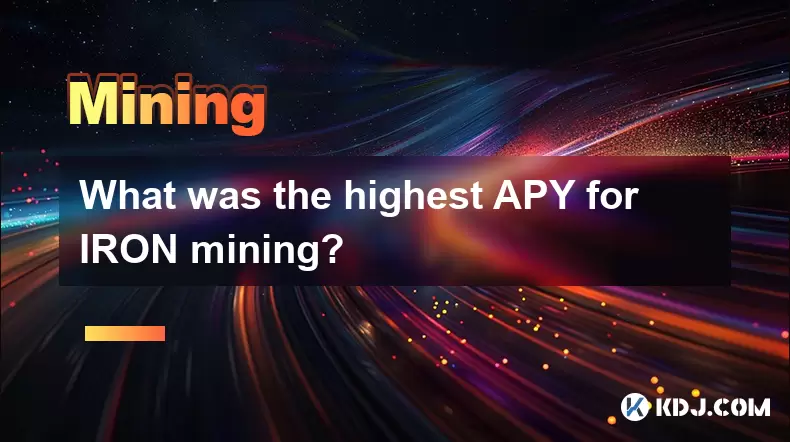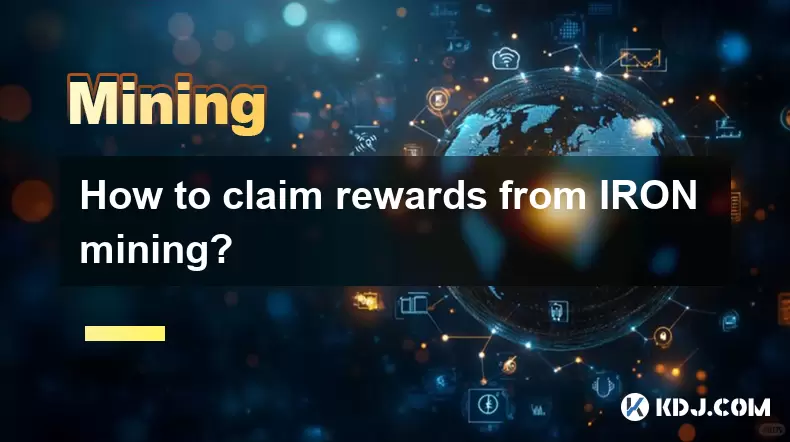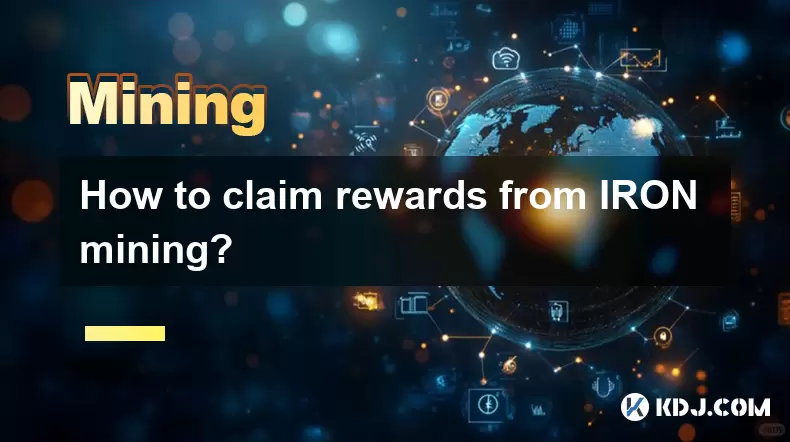-
 Bitcoin
Bitcoin $115200
0.74% -
 Ethereum
Ethereum $3730
6.71% -
 XRP
XRP $3.075
4.85% -
 Tether USDt
Tether USDt $1.000
0.01% -
 BNB
BNB $766.1
1.85% -
 Solana
Solana $168.7
4.22% -
 USDC
USDC $0.9999
0.00% -
 Dogecoin
Dogecoin $0.2097
5.42% -
 TRON
TRON $0.3327
1.72% -
 Cardano
Cardano $0.7547
4.04% -
 Stellar
Stellar $0.4156
4.83% -
 Hyperliquid
Hyperliquid $38.77
1.37% -
 Sui
Sui $3.589
4.15% -
 Chainlink
Chainlink $17.09
4.86% -
 Bitcoin Cash
Bitcoin Cash $574.6
5.82% -
 Hedera
Hedera $0.2523
1.95% -
 Avalanche
Avalanche $23.01
7.68% -
 Ethena USDe
Ethena USDe $1.001
-0.02% -
 Litecoin
Litecoin $120.4
9.83% -
 Toncoin
Toncoin $3.426
-4.06% -
 UNUS SED LEO
UNUS SED LEO $8.918
-0.53% -
 Shiba Inu
Shiba Inu $0.00001250
2.49% -
 Uniswap
Uniswap $9.956
8.52% -
 Polkadot
Polkadot $3.724
3.26% -
 Monero
Monero $304.7
0.19% -
 Dai
Dai $0.9999
-0.01% -
 Bitget Token
Bitget Token $4.394
1.48% -
 Cronos
Cronos $0.1400
6.96% -
 Pepe
Pepe $0.00001076
2.83% -
 Aave
Aave $268.4
3.45%
How does leverage mining work in DeFi mining?
Leverage mining in DeFi boosts potential returns by borrowing funds to increase mining stakes, but it also increases risks like liquidation and high borrowing costs.
Apr 15, 2025 at 04:36 am

Leverage mining in DeFi mining is a sophisticated strategy that allows users to amplify their potential returns by borrowing additional funds to increase their mining stake. This method can significantly boost profits but also comes with increased risks. In this article, we will delve into the mechanics of leverage mining, its benefits, and the risks involved, as well as provide a step-by-step guide on how to engage in leverage mining.
Understanding Leverage Mining
Leverage mining involves using borrowed funds to increase the amount of cryptocurrency that can be staked or locked in a DeFi mining pool. By doing so, users can potentially earn higher rewards than they would with their own capital alone. This strategy is commonly used in decentralized finance (DeFi) platforms that offer lending and borrowing services alongside their mining pools.
The principle behind leverage mining is similar to using leverage in traditional financial markets. In DeFi, users can borrow assets from lending protocols like Aave or Compound, and then use these borrowed assets to participate in mining activities on platforms such as Yearn.Finance or Curve.
Benefits of Leverage Mining
One of the primary benefits of leverage mining is the potential for increased returns. By using borrowed funds, users can stake a larger amount of cryptocurrency, which can lead to higher mining rewards. For example, if a user has 1 ETH and borrows an additional 2 ETH, they can stake a total of 3 ETH, thereby tripling their potential rewards.
Another advantage is the flexibility that leverage mining offers. Users can choose the amount of leverage they want to use, allowing them to tailor their strategy to their risk tolerance and market conditions. Additionally, many DeFi platforms allow users to adjust their leverage positions dynamically, providing more control over their investments.
Risks of Leverage Mining
While leverage mining can amplify returns, it also comes with significant risks. The most obvious risk is the potential for liquidation. If the value of the staked assets drops significantly, the borrowed funds may need to be repaid immediately, which could result in the loss of the user's initial capital.
Another risk is the cost of borrowing. DeFi lending platforms charge interest on borrowed funds, which can eat into the profits from mining. If the interest rates are high, the net returns from leverage mining may be lower than expected.
Additionally, the complexity of managing leveraged positions can be a challenge for inexperienced users. It requires a good understanding of market conditions, interest rates, and the specific mechanics of the DeFi platforms being used.
How to Engage in Leverage Mining
Engaging in leverage mining requires careful planning and execution. Here is a detailed guide on how to get started:
Choose a DeFi Platform: Start by selecting a DeFi platform that offers both lending and mining services. Popular options include Aave, Compound, Yearn.Finance, and Curve. Research each platform to understand their fees, interest rates, and mining rewards.
Deposit Collateral: Once you have chosen a platform, you need to deposit collateral to secure your loan. This collateral is typically in the form of cryptocurrency, such as ETH or stablecoins. The amount of collateral required will depend on the platform's loan-to-value (LTV) ratio.
Borrow Assets: After depositing collateral, you can borrow assets from the lending pool. The amount you can borrow will be based on the value of your collateral and the LTV ratio. For example, if you deposit 1 ETH as collateral and the LTV ratio is 75%, you can borrow up to 0.75 ETH.
Stake Borrowed Assets: Take the borrowed assets and stake them in the mining pool of your choice. Ensure that the mining pool is compatible with the assets you have borrowed. Some platforms may have specific requirements or restrictions on which assets can be staked.
Monitor and Manage: Keep a close eye on your leveraged position. Monitor the value of your staked assets, the interest rates on your borrowed funds, and the mining rewards you are earning. Adjust your position as needed to manage risk and maximize returns.
Repay Borrowed Funds: When you are ready to exit your leveraged position, you will need to repay the borrowed funds plus any accrued interest. Withdraw your staked assets from the mining pool and use them to repay the loan. If your mining rewards exceed the cost of borrowing, you will have made a profit.
Choosing the Right Assets for Leverage Mining
Selecting the right assets for leverage mining is crucial for success. Stablecoins are often a popular choice because they are less volatile than other cryptocurrencies, which can help reduce the risk of liquidation. Examples of stablecoins include USDT, USDC, and DAI.
However, stablecoins may offer lower mining rewards compared to more volatile assets like ETH or BTC. If you are willing to take on more risk, you can consider using these assets for leverage mining. Just be aware that the potential for higher rewards comes with a higher risk of liquidation.
Managing Risk in Leverage Mining
Effective risk management is essential when engaging in leverage mining. Here are some strategies to help manage risk:
Set Stop-Losses: Many DeFi platforms allow users to set stop-loss orders, which can automatically liquidate your position if the value of your staked assets falls below a certain threshold. This can help limit potential losses.
Diversify: Consider diversifying your leverage mining activities across multiple platforms and assets. This can help spread risk and reduce the impact of any single investment going wrong.
Stay Informed: Keep up to date with market conditions, interest rates, and any changes to the DeFi platforms you are using. Being informed can help you make better decisions and react quickly to changing circumstances.
Use Lower Leverage: If you are new to leverage mining, consider starting with lower levels of leverage. This can help you gain experience and build confidence without exposing yourself to excessive risk.
Frequently Asked Questions
Q: Can I use leverage mining on any DeFi platform?
A: Not all DeFi platforms support leverage mining. It is important to choose a platform that offers both lending and mining services. Platforms like Aave, Compound, Yearn.Finance, and Curve are popular choices for leverage mining.
Q: What happens if I cannot repay my borrowed funds?
A: If you are unable to repay your borrowed funds, your collateral may be liquidated to cover the debt. This could result in the loss of your initial capital. It is important to monitor your leveraged position closely and have a plan in place to manage potential liquidations.
Q: How do I calculate the potential returns from leverage mining?
A: To calculate potential returns, you need to consider the mining rewards, the interest rate on borrowed funds, and the value of your staked assets. Subtract the cost of borrowing from the mining rewards to determine your net returns. Keep in mind that the value of your staked assets can fluctuate, which will affect your overall returns.
Q: Are there any tools to help me manage my leverage mining activities?
A: Yes, there are several tools available to help manage leverage mining. Platforms like Zapper and DeBank offer dashboards that can help you track your positions across multiple DeFi protocols. Additionally, some platforms provide calculators to estimate potential returns and risks.
Disclaimer:info@kdj.com
The information provided is not trading advice. kdj.com does not assume any responsibility for any investments made based on the information provided in this article. Cryptocurrencies are highly volatile and it is highly recommended that you invest with caution after thorough research!
If you believe that the content used on this website infringes your copyright, please contact us immediately (info@kdj.com) and we will delete it promptly.
- Cryptocurrency, Altcoins, and Profit Potential: Navigating the Wild West
- 2025-08-04 14:50:11
- Blue Gold & Crypto: Investing Disruption in Precious Metals
- 2025-08-04 14:30:11
- Japan, Metaplanet, and Bitcoin Acquisition: A New Era of Corporate Treasury?
- 2025-08-04 14:30:11
- Coinbase's Buy Rating & Bitcoin's Bold Future: A Canaccord Genuity Perspective
- 2025-08-04 14:50:11
- Coinbase's Buy Rating Maintained by Rosenblatt Securities: A Deep Dive
- 2025-08-04 14:55:11
- Cryptos, Strategic Choices, High Returns: Navigating the Meme Coin Mania
- 2025-08-04 14:55:11
Related knowledge

What was the highest APY for IRON mining?
Jul 23,2025 at 05:14am
Understanding IRON Token and Its Mining MechanismThe IRON token is a stablecoin that operates within the Iron Finance ecosystem, primarily on blockcha...

What is impermanent loss in IRON pools?
Jul 23,2025 at 09:00am
Understanding Impermanent Loss in the Context of IRON PoolsImpermanent loss is a phenomenon that affects liquidity providers in decentralized finance ...

How to claim rewards from IRON mining?
Jul 23,2025 at 02:21pm
Understanding IRON Mining and Reward MechanismsIRON Finance operated as a decentralized finance (DeFi) protocol on the Polygon and Binance Smart Chain...

How to claim rewards from IRON mining?
Jul 29,2025 at 05:07am
Understanding IRON Mining and Reward MechanismIRON is a dual-token system designed to stabilize the value of a synthetic asset through a combination o...

IRON mining tutorial for beginners
Jul 27,2025 at 12:01am
What Is IRON and How Does It Work in the Cryptocurrency Ecosystem?IRON is a cryptocurrency token that operates on the Binance Smart Chain (BSC) and is...

How to calculate APY for IRON mining?
Jul 28,2025 at 09:49am
Understanding APY in the Context of IRON Token MiningWhen engaging in IRON token mining within decentralized finance (DeFi) platforms, Annual Percenta...

What was the highest APY for IRON mining?
Jul 23,2025 at 05:14am
Understanding IRON Token and Its Mining MechanismThe IRON token is a stablecoin that operates within the Iron Finance ecosystem, primarily on blockcha...

What is impermanent loss in IRON pools?
Jul 23,2025 at 09:00am
Understanding Impermanent Loss in the Context of IRON PoolsImpermanent loss is a phenomenon that affects liquidity providers in decentralized finance ...

How to claim rewards from IRON mining?
Jul 23,2025 at 02:21pm
Understanding IRON Mining and Reward MechanismsIRON Finance operated as a decentralized finance (DeFi) protocol on the Polygon and Binance Smart Chain...

How to claim rewards from IRON mining?
Jul 29,2025 at 05:07am
Understanding IRON Mining and Reward MechanismIRON is a dual-token system designed to stabilize the value of a synthetic asset through a combination o...

IRON mining tutorial for beginners
Jul 27,2025 at 12:01am
What Is IRON and How Does It Work in the Cryptocurrency Ecosystem?IRON is a cryptocurrency token that operates on the Binance Smart Chain (BSC) and is...

How to calculate APY for IRON mining?
Jul 28,2025 at 09:49am
Understanding APY in the Context of IRON Token MiningWhen engaging in IRON token mining within decentralized finance (DeFi) platforms, Annual Percenta...
See all articles

























































































